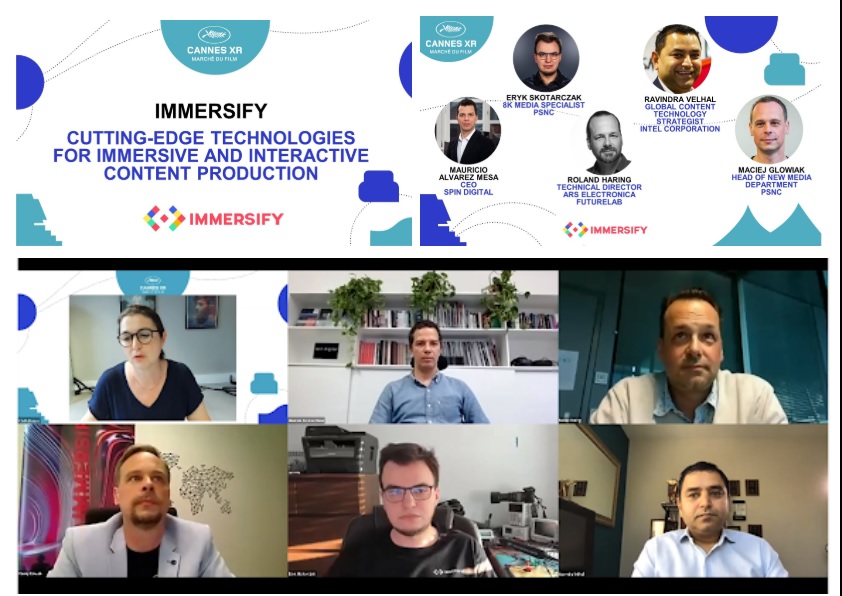This year’s Cannes XR—a program fully dedicated to immersive technologies and works, in connection with the art of storytelling and the film industry—took place virtually from June 24th to 26th 2020 due to the Coronavirus pandemic. About 10.000 people registered for Cannes XR Virual, matching numbers from the past years’ live event. The Immersify team held a panel sharing their experiences and insights on producing and exhibiting highly immersive and interactive content. Here is a short recap of the presentation.

Right on time at 8 pm CET, Cécile Dumas from Marché du Film opened the panel with a short introduction to the topic, addressing the change of plans due to the Coronavirus pandemic. She then gives the floor to Maciej Glowiak from PSNC, who lead through the conversation, posing some questions in between the speakers’ presentations:
First, Mauricio Alvarez Mesa from Spin Digital talked about technologies for the next-generation of immersive media, focusing on demands for very high resolution and wide field-of-view (FoV). When asked about high-resolution technology demands on head-mounted displays (HDM), he argues that “HDM technology is evolving slower than people expected but we foresee that in the near future there will be HDMs – and there already are some professional ones on the market – that will need 8K“.
In the next part of the panel, Eryk Skotarczak from PSNC spoke about new approaches to immersive content production and 360° videos. He showed behind-the-scenes footage and demonstrations from some of the content created during the Immersify project, including 14K panorama and 360° timelapses, live 8K and super slow motion content productions and ambisonic sound production. Ending his presentation with footage from the final Immersify demonstration and the 8K screen technology used for the live stream part of the demonstration, he concludes “We use twelve projectors because there is no projector solution for a real 8K system yet“, pointing out the demand for further development in the fields of immersive media technologies.
Roland Haring from Ars Electronica Futurelab next discussed interactive and immersive content and the challenges that come with it, emphasizing “What comes to your mind when you think about immersive media probably are HMDs, because this is basically the standard device for immersive experiences. But they have fundamental shortcomings – most of all, they are designed for single user interfaces and therefore are not designed for groups of people. But there is much more than just HMDs.” He then goes into detail about immersive content production for both dome theaters and L -shaped VR environments as well as their technological requirements.
Special guest Ravindra Velhal, Global Content Technology Strategist at Intel, concluded the panel with his view on the project, pushing for moving technological boundaries and breaking the ‘4th wall’ of volumetric production.
You can re-watch the panel discussion here:
More than 200 viewers registered for the panel across multiple platforms, including the Marché du Film Online platform, the Kaléidoscope website, the Tribeca website and a live stream in the Museum of Other Realitie’s conference room.
